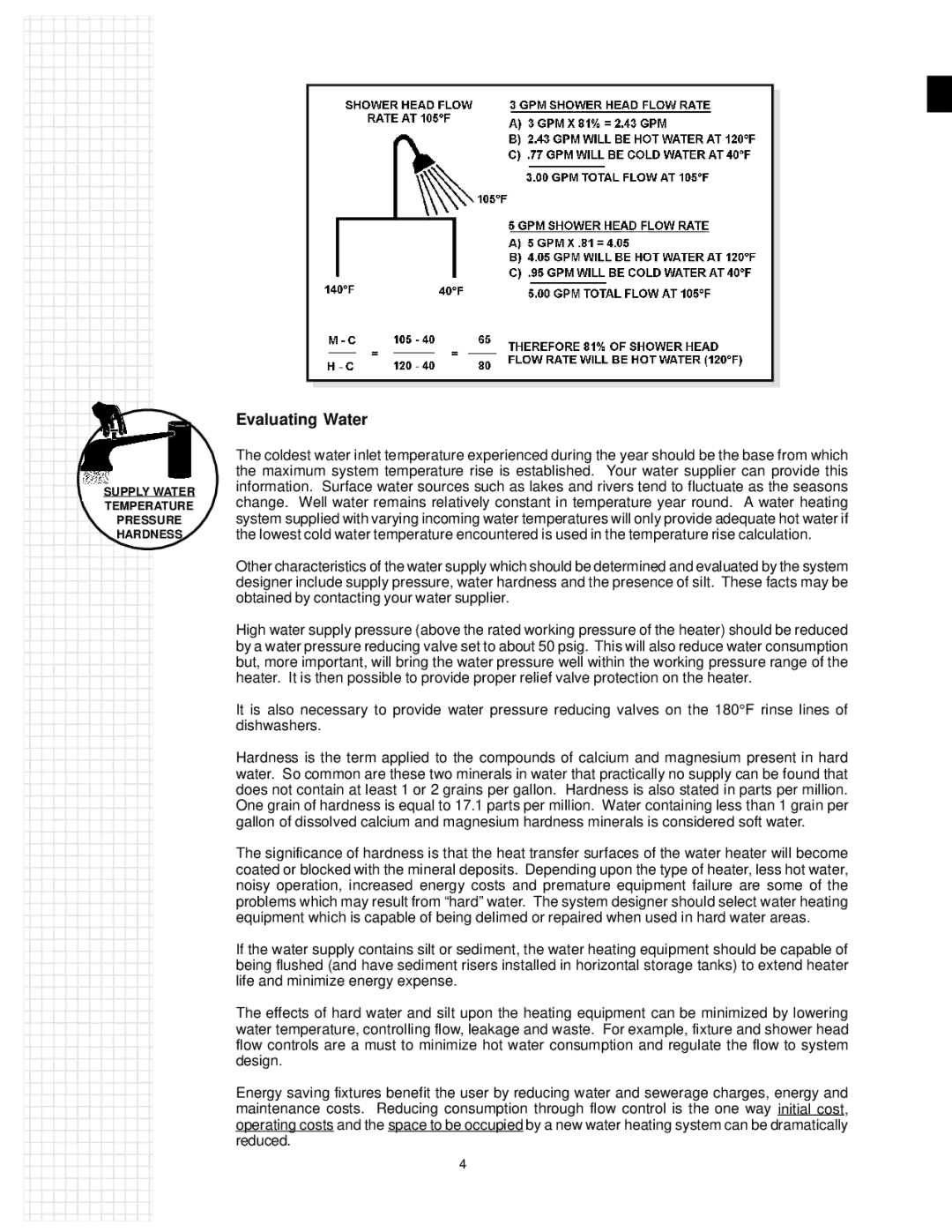
SUPPLY WATER
TEMPERATURE
PRESSURE
HARDNESS
123456789011
Evaluating Water
The coldest water inlet temperature experienced during the year should be the base from which the maximum system temperature rise is established. Your water supplier can provide this information. Surface water sources such as lakes and rivers tend to fluctuate as the seasons change. Well water remains relatively constant in temperature year round. A water heating system supplied with varying incoming water temperatures will only provide adequate hot water if the lowest cold water temperature encountered is used in the temperature rise calculation.
Other characteristics of the water supply which should be determined and evaluated by the system designer include supply pressure, water hardness and the presence of silt. These facts may be obtained by contacting your water supplier.
High water supply pressure (above the rated working pressure of the heater) should be reduced by a water pressure reducing valve set to about 50 psig. This will also reduce water consumption but, more important, will bring the water pressure well within the working pressure range of the heater. It is then possible to provide proper relief valve protection on the heater.
It is also necessary to provide water pressure reducing valves on the 180°F rinse lines of dishwashers.
Hardness is the term applied to the compounds of calcium and magnesium present in hard water. So common are these two minerals in water that practically no supply can be found that does not contain at least 1 or 2 grains per gallon. Hardness is also stated in parts per million. One grain of hardness is equal to 17.1 parts per million. Water containing less than 1 grain per gallon of dissolved calcium and magnesium hardness minerals is considered soft water.
The significance of hardness is that the heat transfer surfaces of the water heater will become coated or blocked with the mineral deposits. Depending upon the type of heater, less hot water, noisy operation, increased energy costs and premature equipment failure are some of the problems which may result from “hard” water. The system designer should select water heating equipment which is capable of being delimed or repaired when used in hard water areas.
If the water supply contains silt or sediment, the water heating equipment should be capable of being flushed (and have sediment risers installed in horizontal storage tanks) to extend heater life and minimize energy expense.
The effects of hard water and silt upon the heating equipment can be minimized by lowering water temperature, controlling flow, leakage and waste. For example, fixture and shower head flow controls are a must to minimize hot water consumption and regulate the flow to system design.
Energy saving fixtures benefit the user by reducing water and sewerage charges, energy and maintenance costs. Reducing consumption through flow control is the one way initial cost, operating costs and the space to be occupied by a new water heating system can be dramatically reduced.
4
